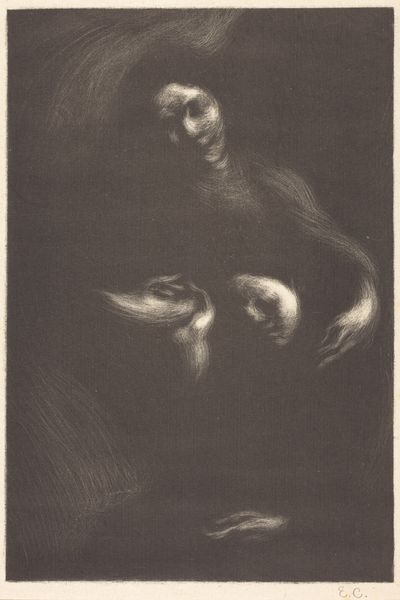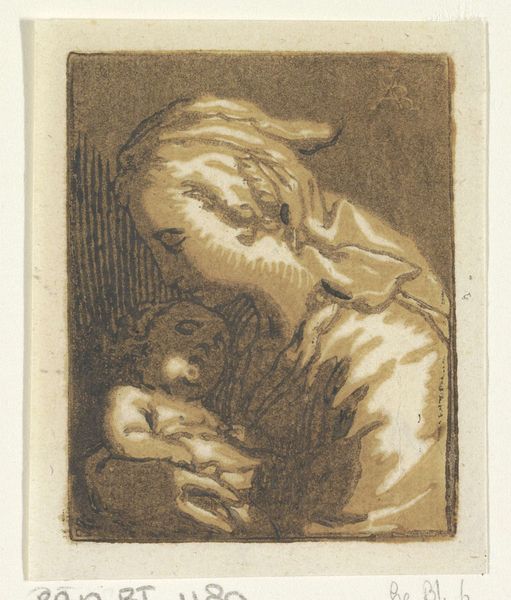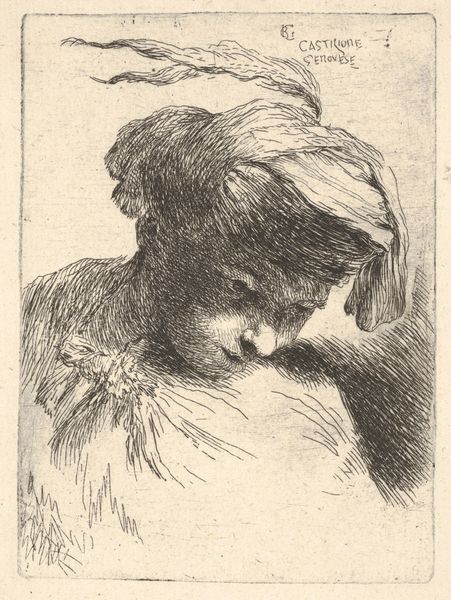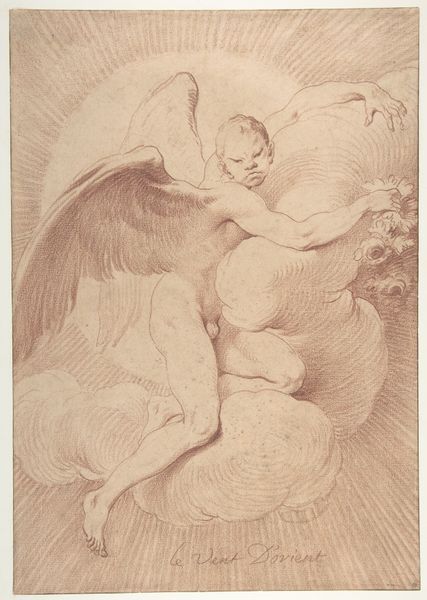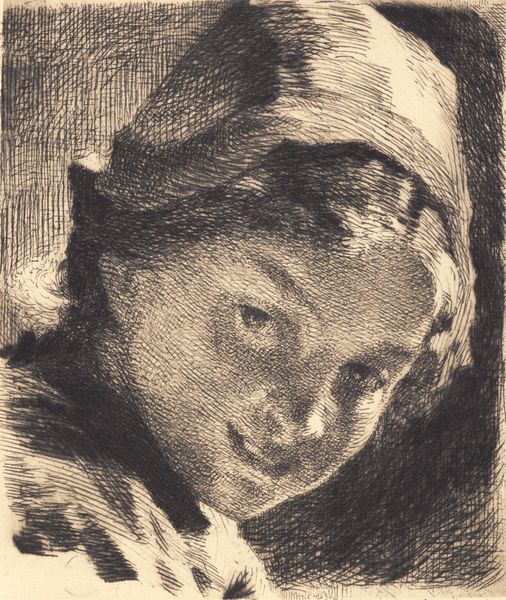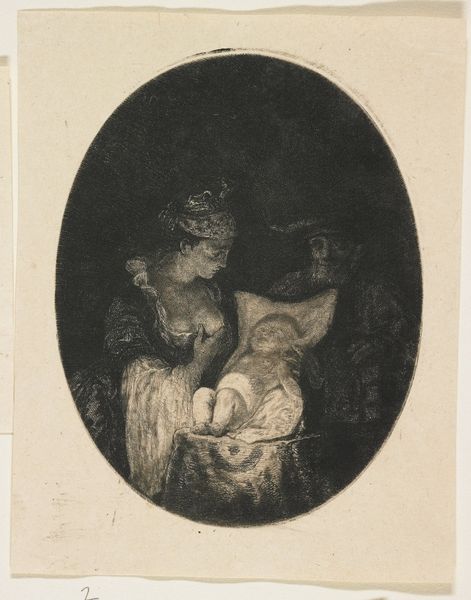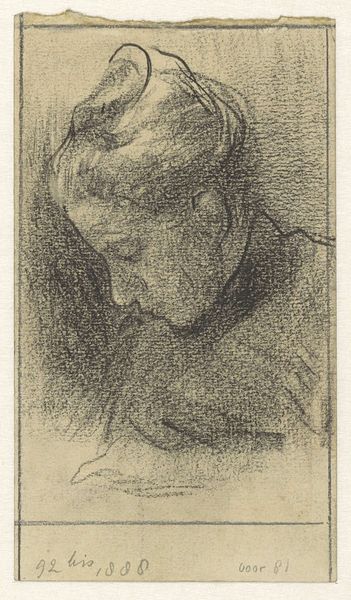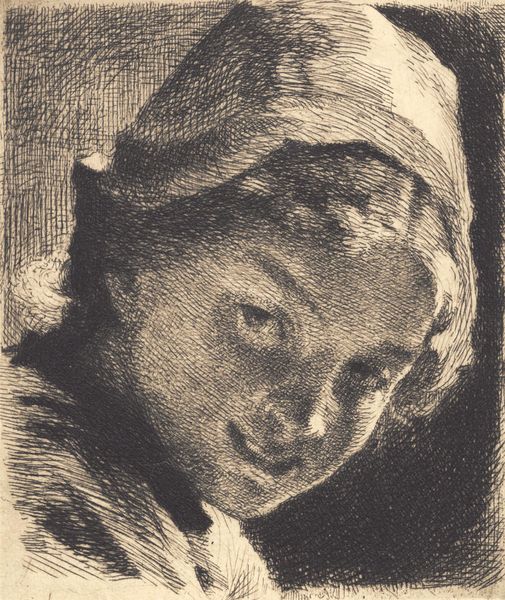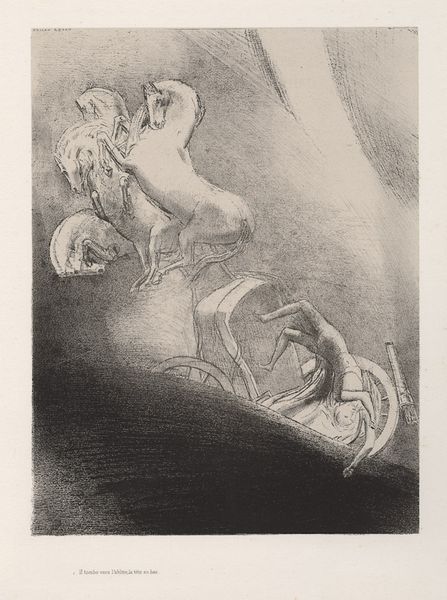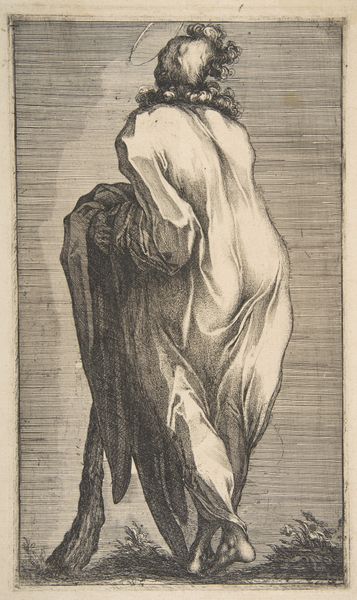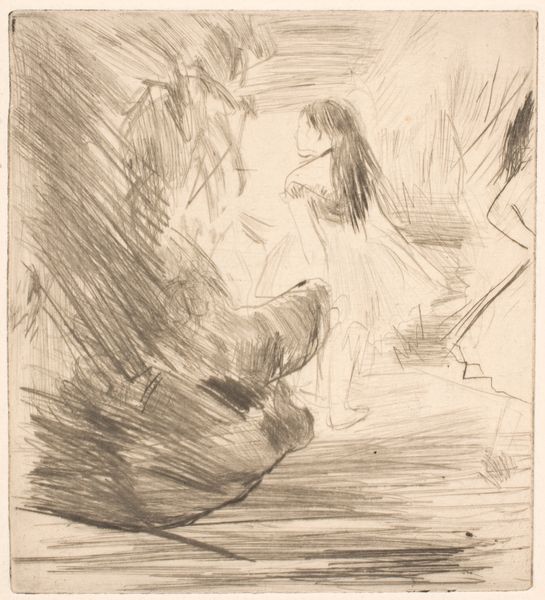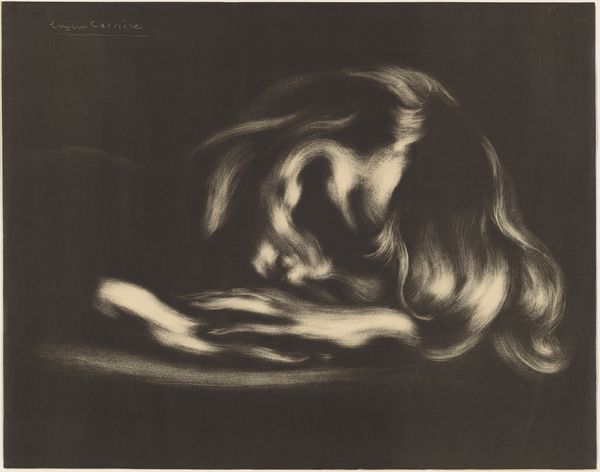
drawing, print, pencil
#
portrait
#
pencil drawn
#
drawing
# print
#
figuration
#
pencil drawing
#
pencil
#
line
#
symbolism
#
portrait drawing
Dimensions: overall: 15 x 8.5 cm (5 7/8 x 3 3/8 in.)
Copyright: National Gallery of Art: CC0 1.0
Curator: Welcome. We're standing before Eugène Carrière’s “Maternity,” created in 1896. This work, a print created from a pencil drawing, captures a mother and child in a way that's both intimate and deeply symbolic. Editor: My goodness, it's like a dreamscape, isn’t it? The figures seem to emerge from this hazy gray, all soft lines and whispered forms. A blurry, but very strong feeling, almost womb-like. Curator: Yes, Carrière's style is marked by this hazy, almost monochromatic palette. He was exploring themes of family and intimacy within the domestic sphere, reflecting a broader cultural interest at the time. The rise of the nuclear family, the emphasis on sentimental bonds, the dawn of new age thinking... Editor: New Age? Well, I can feel something kind of ephemeral for sure... like gazing into a memory. What do you think he was trying to capture here with such etherealness? Is it only family dynamics? Curator: Certainly. Carrière exhibited at the Salon de la Rose + Croix, the Parisian venue of the Symbolist movement. His signature intimate scenes, portraying his wife and children, explore themes like the dawn of consciousness or the mystery of familial love through Symbolist philosophy. He gained significant recognition for these intimate family scenes. Editor: Okay, this is fascinating. Thinking of the Rose + Croix and this art being from the fin de siècle. I like the contrast with all the period's societal upheaval... Here, we've got this sort of calm center, but portrayed with some uncanny style of blurry edges. This couple reminds me of holding something precious but almost invisible. Curator: It's interesting that you use the term “invisible," considering the printing process makes the artist’s hand a sort of shadow, obscured under ink. He really transformed that domestic setting into something universal, tapping into deeper emotions and ideals linked to motherhood. And remember, art, throughout modernity, took center stage to reflect society's issues, or as in the Carriere's, an alternative view to escape reality. Editor: Very profound! Now, reflecting on Carrière's dreamlike vision, I think it prompts a pause. In this chaotic, contemporary world, we are forced to look back to find such a quietly resonant expression of motherhood and our first bonds. It certainly moves you, doesn’t it?
Comments
No comments
Be the first to comment and join the conversation on the ultimate creative platform.
